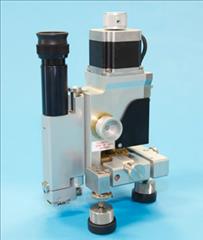 SINT’s MTS3000 residual stress analyzer offers high speed, accuracy
SINT’s MTS3000 residual stress analyzer offers high speed, accuracy
July 3, 2019 REDWIRE is news you can use from leading suppliers. Powered by FRASERS.
Posted by Durham Instruments
One Source For All Your Quantitative Measuring Needs. With Over 50 Yrs.Of Experience In The Instrumentation Field. It Of... Read more
Subscribe
Free REDWIRE e-newsletter

The MTS3000 Residual Stress Analyzer by SINT
SINT Technology manufactures innovative stress-measurement systems that are available in Canada through Durham Instruments. A key example is the MTS3000, also known as the RESTAN, or Residual Stress Analyzer. This device has been designed for measuring residual stresses with a unique hole-drilling method that SINT itself has developed and patented.
This stress analyzer is ideal for use in many industries. Durham Instruments suggests it for applications in general manufacturing, aerospace, automation, food processing, forestry, education, the medical field, the military, mining, packaging, power generation, alternative energy, transportation, and research and development.
Two kinds of vertical movements
The MTS3000 includes an alignment-drilling unit used to drill the hole physically and align the cutter with the centre of the strain gauge rosette with a cross reticule in the eyepiece. The operator also uses the system to obtain the measurement of the hole’s diameter at the end of testing. Micrometer adjustments make the movement on the horizontal x-y plane, while the magnetic feet and overhung design allow the user to position the system in any operation condition very easily.
Two kinds of vertical movements are possible. These are a manual advancement of the drilling head by an adjustment knob and a fine positioning automatically controlled with a stepping motor. The fine positioning allows the user to make all drilling steps with a resolution of one micrometre and feed rate from 0.03 to one millimetre per minute. An electrical contact system automatically carries out zero depth detection on conducive materials.
Features of this stress analyzer include an optical alignment system, a high-speed air-turbine drilling system, an electronic control unit, hole-drilling operating and control software, and software to process the acquired data. The user operates the system with the following steps:
- Install the strain gauge rosette;
- Position the drilling device over the centre of the rosette;
- Configure the test conditions for the hole drilling, with RSM software;
- Determine the hole eccentricity from the strain gauge readings; and
- Process the information by the EVAL calculation software.
The RESTAN system is a must-have for hole-drilling operations.
To learn more, contact Durham Instruments.
Share
Posted by Durham Instruments
One Source For All Your Quantitative Measuring Needs. With Over 50 Yrs.Of Experience In The Instrumentation Field. It Of... Read more
